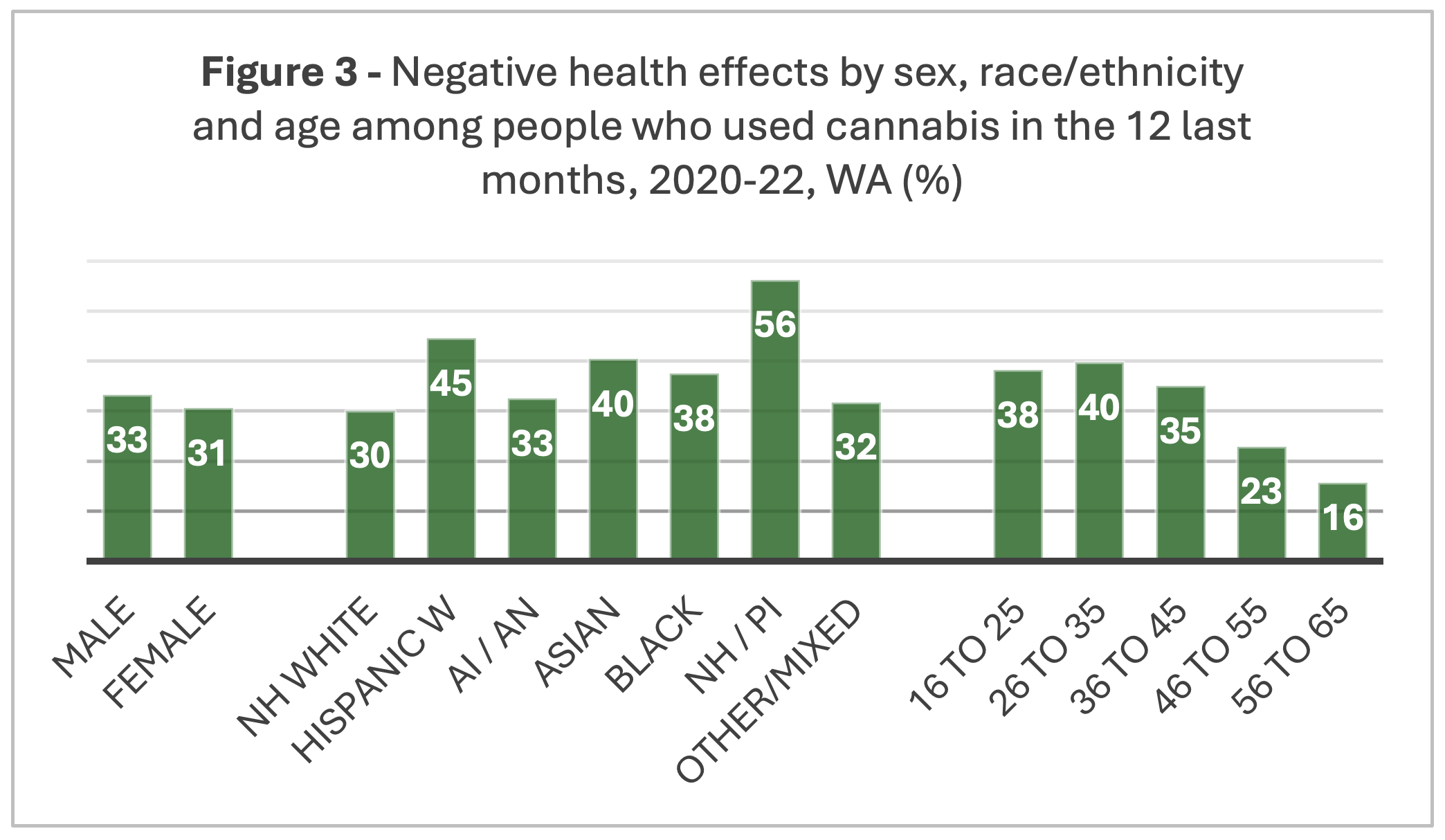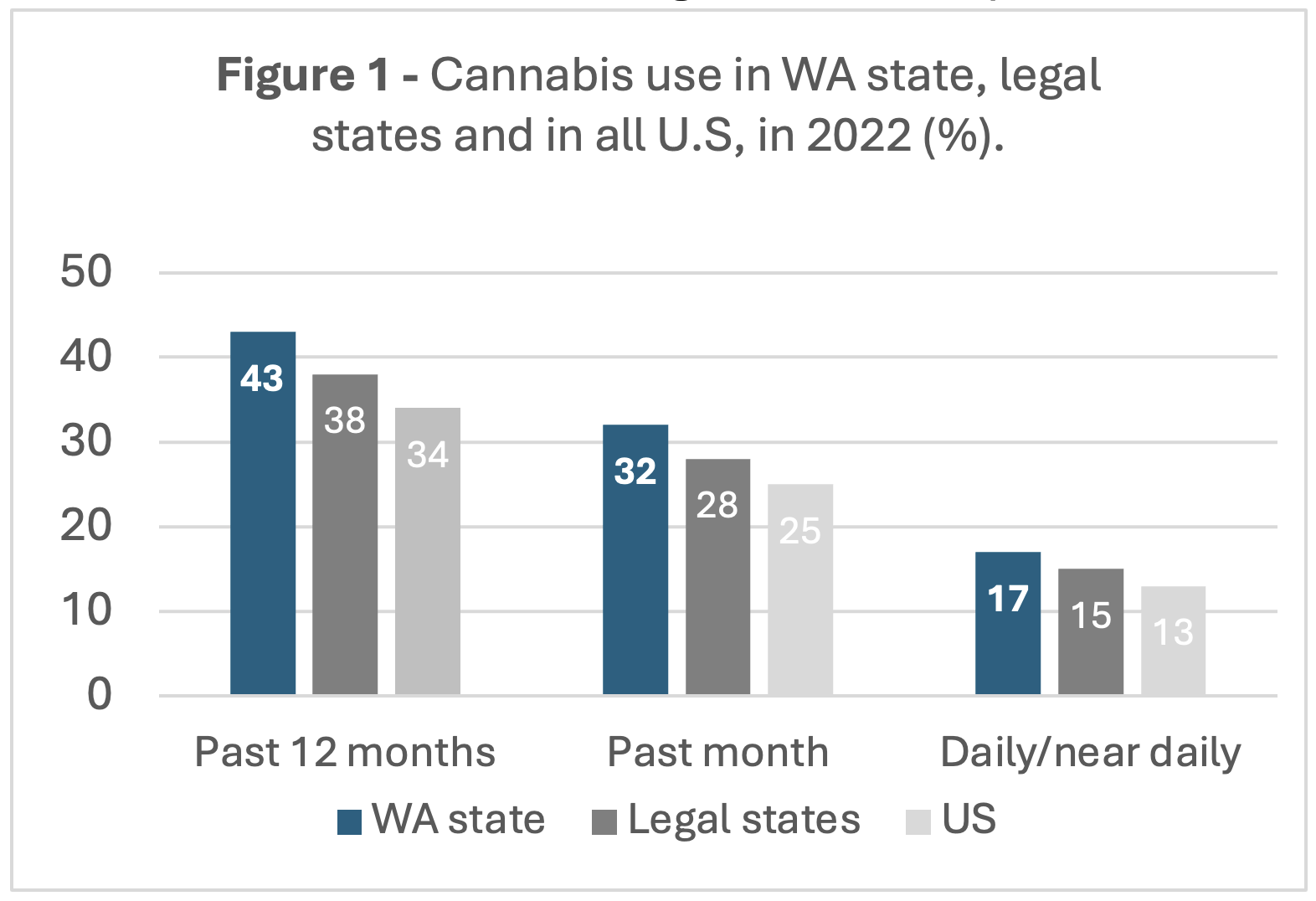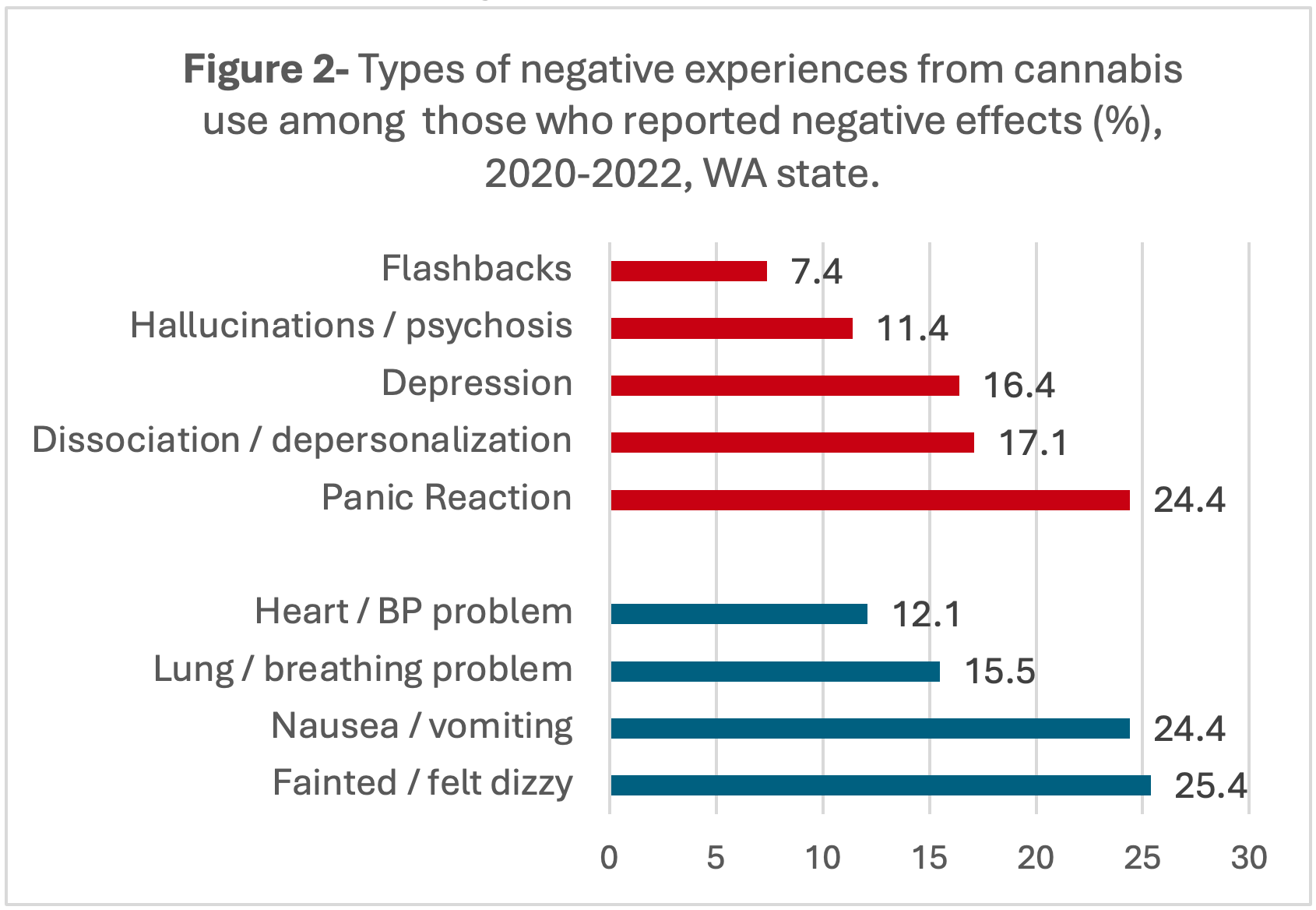Short-term Negative Health Effects of Cannabis Use – Washington State
Some short-term effects of cannabis are desired by the people using it, however some effects may be unwanted. Possible unwanted mental effects include: anxiety, panic, paranoia, impaired memory and attention, or an altered perception of time. Some people have especially severe reactions and may experience hallucinations or psychosis.
Unwanted physical effects include dizziness, dry mouth, coughing, changes in pulse or heart rate, impaired motor skills and reaction times, and sleepiness. In recent years, Cyclic vomiting (Cannabis Hyperemesis Syndrome) has become more frequent among people who use a lot of cannabis regularly.
The short-term effects of cannabis that is smoked, vaped, or dabbed can be felt within seconds and can last a few hours to up to 24 hours. Effects of cannabis that is ingested (eaten or drunk) can be felt between 30 minutes to 4 hours and can last 24 hours or longer.
This page provides statistics about short-term negative experiences from using cannabis among Washington State residents. (Chronic negative health effects and those that may develop over time can be found on our Cannabis Hyperemesis Syndrome, Cannabis Addiction, and Psychosis pages.)
Cannabis use in Washington is one of the highest in the country. Daily use is increasing sharply in WA and across the United States.
Cannabis use has been relatively high in Washington state compared to other U.S. states, even before 2012 legalization. Figure 1 shows how cannabis use in Washington state compares to other US states where cannabis is legal, and to the United States as a whole in 2022.
It is worth mentioning that while past 12-months and past-month cannabis use increased about 16% from 2018 to 2022 among Washingtonians, daily/near daily use (at least 5 days a week) increased at a much higher rate: 41% in the same period. The Washington state increase is, however, less dramatic than in the U.S. as a whole, where daily/near daily use increased 62% from 2018 to 2022.2
About a third of WA-based cannabis consumers report negative effects from their cannabis use. The most common negative effects reported are panic reactions, fainting/feeling dizzy and vomiting/nausea.
While many people will not experience negative health effects after using cannabis, many do. Among Washingtonians who reported using cannabis in the last 12 months, 32% said that they had a negative experience. Almost 7% sought medical help for their symptoms, mostly going to emergency services (74% of occasions) and calling poison centers (37%), among other services.
The most frequent negative mental health effects reported in Washington state are panic reactions and feelings of dissociation or depersonalization (Figure 2, burgundy). The most common negative physical health effects are fainting/feeling dizzy, followed by nausea and vomiting (Figure 2, blue.) Other experiences reported include depression, hallucinations/psychosis, flashbacks, lung/breathing and heart/blood pressure problems (Figure 2.)
The percentage of Washingtonians who used cannabis and experienced negative effects is similar to the rest of the U.S. (30.2%)3 and Canada (30% in 2022).4 The proportion of Washingtonians who sought any kind of medical help is also similar to the rest of the U.S. (8%), but higher than in Canada at 5%.1,4
These similarities suggest that experiencing negative health effects from cannabis available in North America is a widespread phenomenon and affects close to a third of those who consume it, even if they don’t use it frequently. Adults who want to use cannabis should be aware of this relatively high chance of having health issues after using cannabis. This awareness would help lessen the impact of cannabis use on day-to-day responsibilities, including going to school and work, caretaking, driving. Awareness could also increase access to medical services, in case of a severe reaction.
People of different ages and race/ethnicity experience negative effects from cannabis at different rates.
People vary in their response to cannabis (Figure 3). While male and females report similar rates of having negative health effects with cannabis, younger people are more likely than older people to have such bad experiences.
The same is true for people who come from underserved and marginalized communities: Hispanics, Native Hawaiian/Pacific Islander (NH/PI), Black, and American Indian and Alaska Natives (AI/AN) are much more likely than Non-Hispanic Whites (NH White) to experience cannabis-triggered negative effects.

Final considerations
Experiencing negative health effects from cannabis use is common in Washington state, but no different than in the United States as a whole, or in Canada. Young people and marginalized minorities are more likely to have negative experiences with cannabis use.
People who experience a negative effect from cannabis use and need immediate help can call WA Poison Center at (800) 222-1222.
____________________________
Where does this data come from?
This page presents data collected by the International Cannabis Policy Study (ICPS). Washington specific data collection was sponsored by the WA Liquor and Cannabis Board. The analysis of the information presented on this page was done by ADAI CERP. Survey data include several thousand people from 16 to 65 years of age, from 2018-2022. Want to learn more about how this data was collected? Visit the ICPS’ methods page.
References
- Hammond D, Corsetti D, Goodman S, Iraniparast M, Danh Hong D, Burkhalter R on behalf of the ICPS Research Team. International Cannabis Policy Study – United States 2021 Summary. Sept 2022.
- Hammond D, Corsetti D, Fataar F, Iraniparast M, Danh Hong D, Burkhalter R. Interational Cannabis Policy Study – Washington 2022 Summary. May 2023.
- Hammond D. (2022, September 16). High-THC Cannabis Products: Trends in Consumer Use, Adverse Outcomes, and Implications for Policy in Legal Cannabis Markets [Symposium key note presentation]. ADAI Symposium: High-THC Cannabis in Legal Regulated Markets, Seattle, Washington, University of Washington. Retrieved June 7, 2024 2023, from https://adai.uw.edu/cerp/symposium-2022/
- Marquette A, Iraniparast M, Hammond D. Adverse outcomes of cannabis use in Canada, before and after legalisation of non-medical cannabis: cross-sectional analysis of the International Cannabis Policy Study. BMJ Open 2024;14:e077908.
Last updated August 2025.

